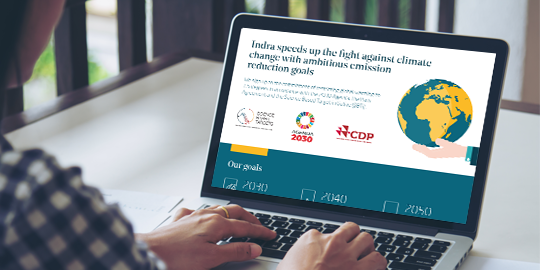
Why should carbon neutrality be achieved by 2050?
From wildfires in Australia, California and even the middle of Siberian Russia, to floods in Asia, desert locusts in Africa, tropical cyclones in the Americas, a record hurricane season in the Atlantic, and the storms that have been buffeting Europe of late, 2020 has witnessed ten meteorological disasters around the world, each having resulted in insured damages worth 1.5 billion dollars, exceeding the total registered in 2019, according to a report published by the NGO Christian Aid, “Counting the cost 2020. A year of climate breakdown. "
Undoubtedly, climate change shifted into high gear in 2020, so it is not strange to wonder whether the storm Filomena is a by-product of this, and even more so if we take into account that, paradoxically, it occurred in one of the warmest years in history.
The answer to this question is yes. Scientifically speaking, global warming causes there to be more humidity in the air, which entails more extreme precipitation, making for stronger snow storms but also causing a higher global temperature of the planet, which has increased by an average of at least 1.1°C compared to the end of the 19th century.
Faced with this scenario, the UN Environmental Report affirms that, in order to limit the temperature increase to 1.5°C, as established in the Paris Agreement on climate change, the world needs to reduce fuel production fossils by about 6% each year between now and 2030.
Based on this premise, Indra has made public its commitment to reduce its Greenhouse Gas (GHG) emissions by 50% in 2030 and 100% in 2040, taking 2019 as a starting point, to align itself with this 1.5ºC target, which means speeding up its fight against global warming.
Indra's efforts to have a positive impact on the environment go further, which is why it has also set its sights on reducing its net emissions to zero by 2050, that is, to be totally carbon neutral, and transferring that requirement to its entire supply chain.
This commitment, which begins by reducing emissions derived from the consumption of fossil fuels and electricity in its work centers, is another bold step on the road to decarbonization, since the action is global and expands its perimeter in a company with nearly 200 work centers in more than 40 countries, nearly 50,000 employees and more than 7,000 suppliers.
Thus, despite not being a polluting company, Indra has become a standard bearer in the reduction of its carbon footprint with a commitment in accordance with the 2030 Agenda and the Paris Agreement, as well as with the Science Based Target initiative (SBTi), a project it has joined promoted by the United Nations Global Compact, the Carbon Disclosure Project (CDP), the World Resources Institute (WRI) and the World Wildlife Fund (WWF).
Indra's strategy to achieve decarbonization
Energy efficiency measures, increased use of green energy, purchases with a lower carbon footprint and promotion of more sustainable mobility, among other initiatives, are the actions that the company will implement to achieve its new goals.
Additionally, Indra contributes to the decarbonization of the economy with the technology it develops, playing a key role in global action for climate and in energy transition. Examples include the solutions it has developed to mitigate the effects of climate change from space and those that promote transport and infrastructure that are more respectful toward the environment; solutions for the smart, efficient and green management of energy, cities and their mobility; and those that, through digital transformation, facilitate better use of resources. With its technology, it also helps governments and companies to be more sustainable.
Looking to the years ahead, Indra plans to continue developing an innovative product line specifically for sustainability that responds to the fight against climate change and helps curb its effects, among other social and environmental challenges included in the UN's Sustainable Development Goals.

Add new comment